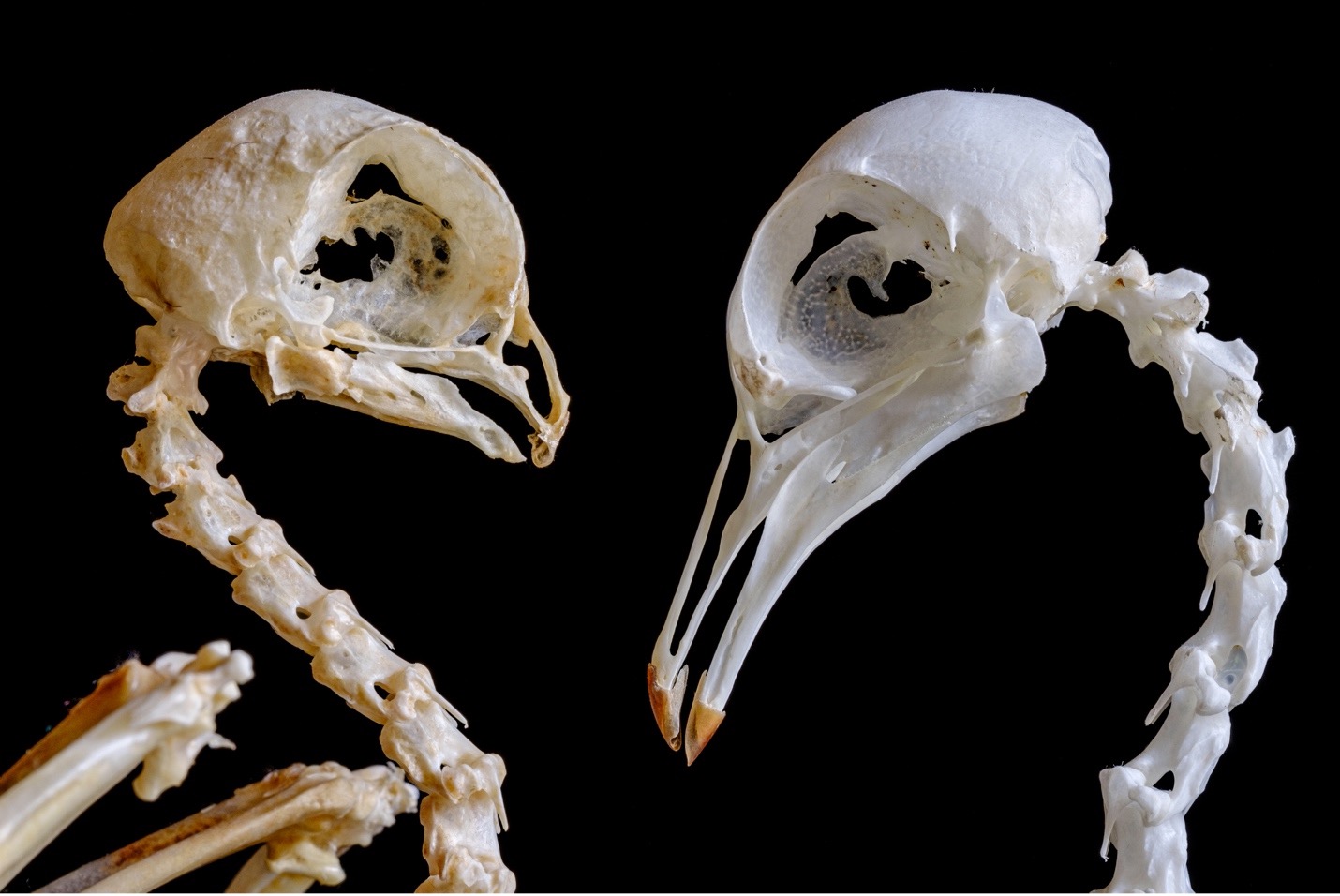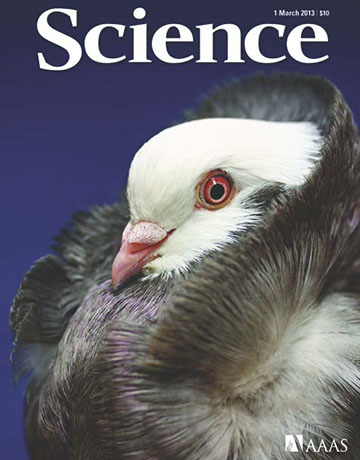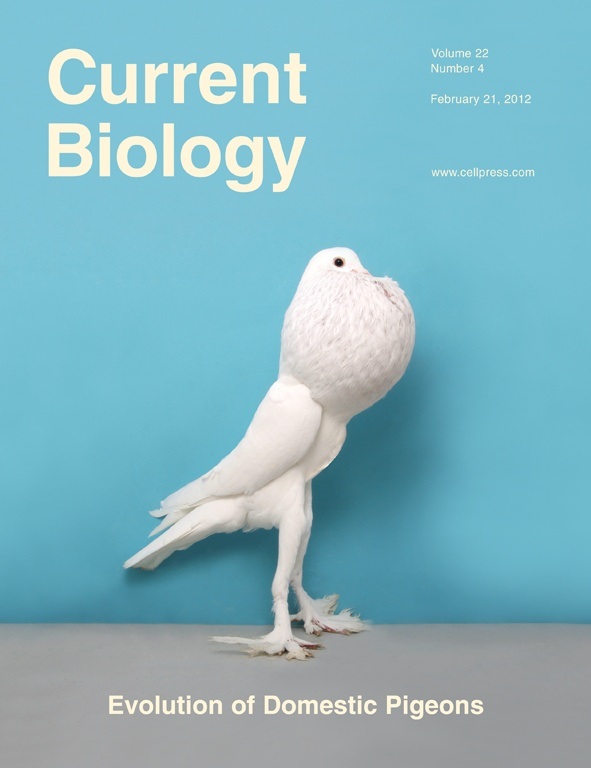Michael D. Shapiro
Professor of Biological Sciences and Adjunct Professor of Human Genetics
Evolutionary Genetics, Genomics, Developmental Biology

Molecular Biology Program
Education
A.B. University of California, Berkeley
Ph.D. Harvard University
Research
Understanding the molecular basis of complex traits is a central challenge in biology and medicine. Even with the complete sequence of many vertebrate genomes now available, determining which of the millions of DNA sequence and structure differences within and among species are responsible for typical and atypical (disease) variation remains difficult. Despite longstanding interest in how genetic and developmental diversity arises, mechanisms of variation are especially difficult to study among different species due to biological barriers against traditional genetic crosses (hybrid infertility or inviability). In addition, genomic comparisons between species often suffer from massive phylogenetic noise rather than phenotypic signal. Consequently, we know remarkably little about the number, location, types, and origins of mutations that control phenotypic change.
Our research focuses on the spectacular variation among domestic pigeons (Columba livia). Several key features make pigeons a powerful system for understanding the genetic and developmental basis of vertebrate diversity. Pigeons show enormous variation within a single species that is on par with, or in excess of, diversity in canonical model organisms. Since their domestication in Neolithic times, pigeon breeders have selected dramatic differences in behavior, skeletal morphology, feather ornaments, and pigmentation in over 350 breeds. The number and magnitude of differences among breeds is often characteristic of changes between species. This astounding standing diversity, coupled with the ease of husbandry and accessibility of embryos, make the pigeon an outstanding model for studies of genetic, developmental, and phenotypic variation.
Pigeons are a compelling model for identifying the genetic basis of variation in traits of general evolutionary significance. Many of the traits that vary among pigeon breeds also vary among wild species of birds and other animals. Moreover, variation in many traits in domestic pigeons, such as head crests and feathered feet, are present in domestic breeds but not the ancestor (“constructive”), rather than reduced or lost relative to the ancestor (“regressive”). Although regressive traits are important, the genetic basis of constructive traits in vertebrates remains comparatively poorly understood. The domestic pigeon is thus a promising model with which to explore the genetic architecture of derived, constructive traits. Collectively, our complementary genetic, genomic, and developmental approaches are enabling us to identify the molecular basis of the astonishing variation among pigeons, thereby opening new avenues to understand the potential roles of specific genes and mutations in variation among vertebrates in general.




References
- E.F. Boer, H.F. Van Hollebeke, E.T. Maclary, C. Holt, M. Yandell, M.D. Shapiro. (2021) A ROR2 coding variant is associated with craniofacial variation in domestic pigeons. Current Biology.
- E. Maclary, B. Phillips, R. Wauer, E. Boer, R. Bruders, T. Gilvarry, C. Holt, M. Yandell, M.D. Shapiro. (2021)Two Genomic Loci Control Three Eye Colors in the Domestic Pigeon (Columba livia). Molecular Biology and Evolution.
- J.G. Baldwin-Brown, S.M. Villa, A.I. Vickrey, K.P. Johnson, S.E. Bush, D.H. Clayton, M.D. Shapiro.(2021) The assembled and annotated genome of the pigeon louse Columbicola columbae, a model ectoparasite. G3: Genes|Genomes|Genetics,https://doi.org/10.1093/g3journal/jkab009.
- R.S. Krauss, D.D.W. Cornelison, G. Kardon, M.D. Shapiro, P.L. Koch. (2020) Science at Sundance 2020. Science, 367: 1188-1191.
- R. Bruders, H. Van Hollebeke, E.J. Osborne, Z. Kronenberg, M. Yandell, M.D. Shapiro. (2020) A copy number variant is associated with a spectrum of pigmentation patterns in the rock pigeon (Columba livia). PLoS Genetics, 16: e1008274.
- E.F. Boer, H.F. Van Hollebeke, S. Park, C.R. Infante, D.B. Menke, M.D. Shapiro. (2019) Pigeon foot feathering reveals conserved limb identity networks. Developmental Biology, 454: 128-144.
- S.M. Villa, J.C. Altuna, J.S. Ruff, A.B. Beach, L.I. Mulvey, E.J. Poole, H.E. Campbell, K.P. Johnson, M.D. Shapiro, S.E. Bush, and D.H. Clayton. (2019) Reproductive isolation arises as a by-product of rapid local adaptation in a natural population. Proceedings of the National Academy of Sciences of the USA, 116: 13440-13445
- A.I. Vickrey, R. Bruders, Z. Kronenberg, E. Mackey, R.J. Bohlender, E. Maclary, R. Maynez, E.J. Osborne, K.P. Johnson, C.D. Huff, M. Yandell, M.D. Shapiro. (2018) Introgression of regulatory alleles and a missense coding mutation drive plumage pattern diversity in the rock pigeon. eLife 7: e34803.
- C. Holt, M. Campbell, D.A. Keays, N. Edelman, A. Kapusta, E. Maclary, E. Domyan, A. Suh, W.C. Warren, M. Yandell, M.T.P. Gilbert, M.D. Shapiro. (2018) Improved genome assembly and annotation for the rock pigeon (Columba livia). G3: Genes | Genomes | Genetics 8: 1391-1398.
- E.T. Domyan, M.D. Shapiro. (2017) Pigeonetics takes flight: Evolution, development, and genetics of intraspecific variation. Developmental Biology 427: 241-250.
- E.T. Domyan, Z. Kronenberg, C. Infante, A.I. Vickrey, S.A. Stringham, R. Bruders, M.W. Guernsey, S. Park, J. Payne, R. Beckstead, G. Kardon, D.B. Menke, M. Yandell, M.D. Shapiro. (2016) Molecular shifts in limb identity underlie development of feathered feet in two domestic avian species. eLife 5: e12115
- Z. Kronenberg, E.J. Osborne, K. Cone, E. Domyan, M.D. Shapiro, N. Elde, M, Yandell. (2015) Wham: Identifying Structural Variants of Biological Consequence. PLoS Computational Biology 11: e1004572
- A.I. Vickrey, E.T. Domyan, M.P. Horvath, M.D. Shapiro. (2015) Convergent evolution of head crests in two domesticated columbids is associated with different missense mutations in EphB2. Molecular Biology and Evolution 32: 2657-64
- E.T. Domyan, M.W. Guernsey, Z. Kronenberg, S. Krishnan, R.E. Boissy, A. Vickrey, C. Rodgers, P. Cassidy, S.A. Leachman, J.W. Fondon III, M. Yandell, M.D. Shapiro. (2014) Epistatic and combinatorial effects of pigmentary gene mutations in the domestic pigeon. Current Biology 24: 459-464
- M.D. Shapiro*, Z. Kronenberg, C. Li, E.T. Domyan, H. Pan, M. Campbell, H. Tan, C.D. Huff, Haofu Hu, A.I. Vickrey, S.A. Nielsen, S.A. Stringham, Hao Hu, E. Willerslev, M.T.P. Gilbert, M. Yandell, G. Zhang, J. Wang* (* co-corresponding and senior authors). (2013) Genomic diversity and evolution of the head crest in the rock pigeon. Science 339: 1063-1067
- S.A. Stringham, E.A. Mulroy, J. Xing, D. Record, M.W. Guernsey, J.T. Aldenhoven, E.J. Osborne, M.D. Shapiro. (2012) Divergence, convergence, and the ancestry of feral populations in the domestic rock pigeon. Current Biology 22: 302-308 (Cover article)
- J.T. Aldenhoven, M.A. Miller, P. Showers Corneli, M.D. Shapiro. (2010) Phylogeography of ninespine sticklebacks (Pungitius pungitius) in North America: glacial refugia and the origins of adaptive traits. Molecular Ecology 19: 4061-4076
- Y.F. Chan, M.E. Marks, F.C. Jones, G. Villarreal Jr, M.D. Shapiro, S. Fisher, A.M. Southwick, D.M. Absher, J. Grimwood, J. Schmutz, R.M. Myers, D. Petrov, B. Jónsson, D. Schluter, M.A. Bell, D.M. Kingsley. (2010) Adaptive evolution of pelvic reduction in sticklebacks by recurrent deletion of a Pitx1 enhancer. Science 5963: 302-305
- M.D. Shapiro, B.R. Summers, S. Balabhadra, J.T. Aldenhoven, A.L. Miller, C. Cunningham, M.A. Bell, D.M. Kingsley. (2009) The genetic architecture of skeletal convergence and sex determination in ninespine sticklebacks. Current Biology 19: 1140-1145
- M.D. Shapiro, M.A. Bell, D.M. Kingsley. (2006) Parallel genetic origins of pelvic reduction in vertebrates. Proc Natl Acad Sci USA 103: 13753-13718
- M.D. Shapiro, M.E. Marks, C.L. Peichel, B.K. Blackman, K.S. Nereng, B. Jonsson, D. Schluter, D.M. Kingsley. (2004) Genetic and developmental basis of evolutionary pelvic reduction in threespine sticklebacks. Nature 428: 717-723
- M.D. Shapiro, J. Hanken, N. Rosenthal. (2003) Developmental basis of evolutionary digit loss in the Australian lizard Hemiergis. J Exp Zool 297B: 48-56
- M.D. Shapiro. (2002) Developmental morphology of limb reduction in Hemiergis (Squamata: Scincidae): chondrogenesis, osteogenesis, and heterochrony. Journal of Morphology 254: 211-231
